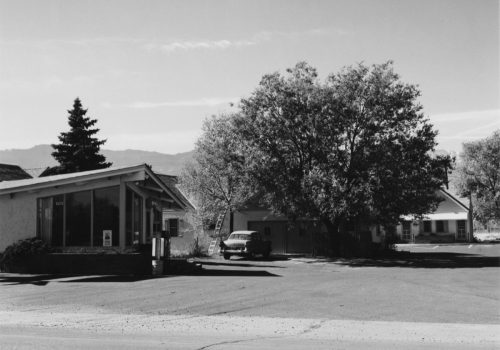Robert Adams, the photographer and writer has an answer for the last lines of Samuel Beckett’d The Unnamable, “You must go on. I can’t go on. I’ll go on”.
Art.
Art can help us continue.
Adams has been a presence in photography for almost 50 years. He makes images and writes with astonishing precision. He raises the bar almost too high.
Art Can Help is the title of Mr. Adams’ new book from Yale University Press. The writing is spare, insightful and often brilliant. “Beauty is what distinguishes art. Beauty is never less than a mystery, but it has with it a promise.” He is impatient and sharply dismissive of some contemporaries whose work is “born of cynicism and predictive of nihilism”. He is delighted to share other artist’s insights such as John Baldessari’s response when asked what is art: “Not a clue. Not … a … clue.”
Sometimes the aphorisms miss the mark, sounding more like fortune cookie, Magic 8-Ball replies: “Few artists care enough about us to risk our alienation by a picture so taut with despair and fragile possibility. A song can sometimes speak right past the words.” Huh? Siri says “Reply hazy try again.”
But overall you want to read Adams with a pencil in order to underline and savor statements like “Here is how art helps. Harmony can reinforce a sense of meaning in life.” The gallery press release even offers “the example of trees does suggest a harmony for which it seems right to dream.”
Adams’ photography is consistent and striking. It is surprising how often his formats or cropping change. His best are his small pictures that insist on intimacy with the viewer. Adams images translate to the printed page very well as his many, many books of photographs attest.
He talks about light. He also likes words like “astonishment”, “purity”, “transience”, and “redemption”. His artistic journey is a quest. He loves the “poignancy of light” found in Edward Hopper paintings and that artist’s desire “to show light”. He references Chelsea Milosz’s “hope” as “trust in the light that shows through these earthly forms”.
Curiously the greatest power in these tree images is not their lightness but their density. Adams loves closing in on thickets of branches with impenetrable, unknowable dark cores. Sometimes he seems to be denying the trees their essence by cropping them, not letting the tops breathe in the light at the top of the frame. The darkness is the heart. The work easily belongs in the formidable company of 19th Century French photographers working in the forest of Fontainebleau like Eugène Cuvelier and Gustave LeGray.
It is revealing of something that a survey of more than thirty works from more than four decades is so consistent. The artist does come to a full stop with his portraits of tree stumps. There is a lovely gravity in these, and in his regard for endings, for survivors with lives fully lived. It is trees here, but the metaphor resonates.
The images selected for the book are remarkable especially a great Abelardo Morell. The artists presented are very personal choices, often unfamiliar like Robert Benjamin, Mary Peck, Sharon Poynter towards the end of the book.
The road he travels, he does repeatedly, making pictures along the way, “usually where you stop long enough”.
The Unseen Eye recognizes that even with his reservations, Adams would urge him on. “No matter how many times I tell you this, you’re still thinking, thinking, judging, judging, coming to conclusions, trying to work out your life. You have to let go. Totally, absolutely, completely. You have to let go so completely that you will feel no body, no mind, no pain, nothing.”
It is a search for the sublime.
In the artist’s words from his 1981 classic Beauty in Photography: Essays in Defense of Traditional Values: “The job of the photographer is not to catalogue indisputable fact, but to try to be coherent about intuition and hope … to give witness to splendor.”
W.M. Hunt
W.M. Hunt writes as The Unseen Eye. He is an occasional contributor to L’Œil de la Photographie and was one of its original supporters.
Robert Adams, Art Can Help
Published by Yale University Press
$25
















